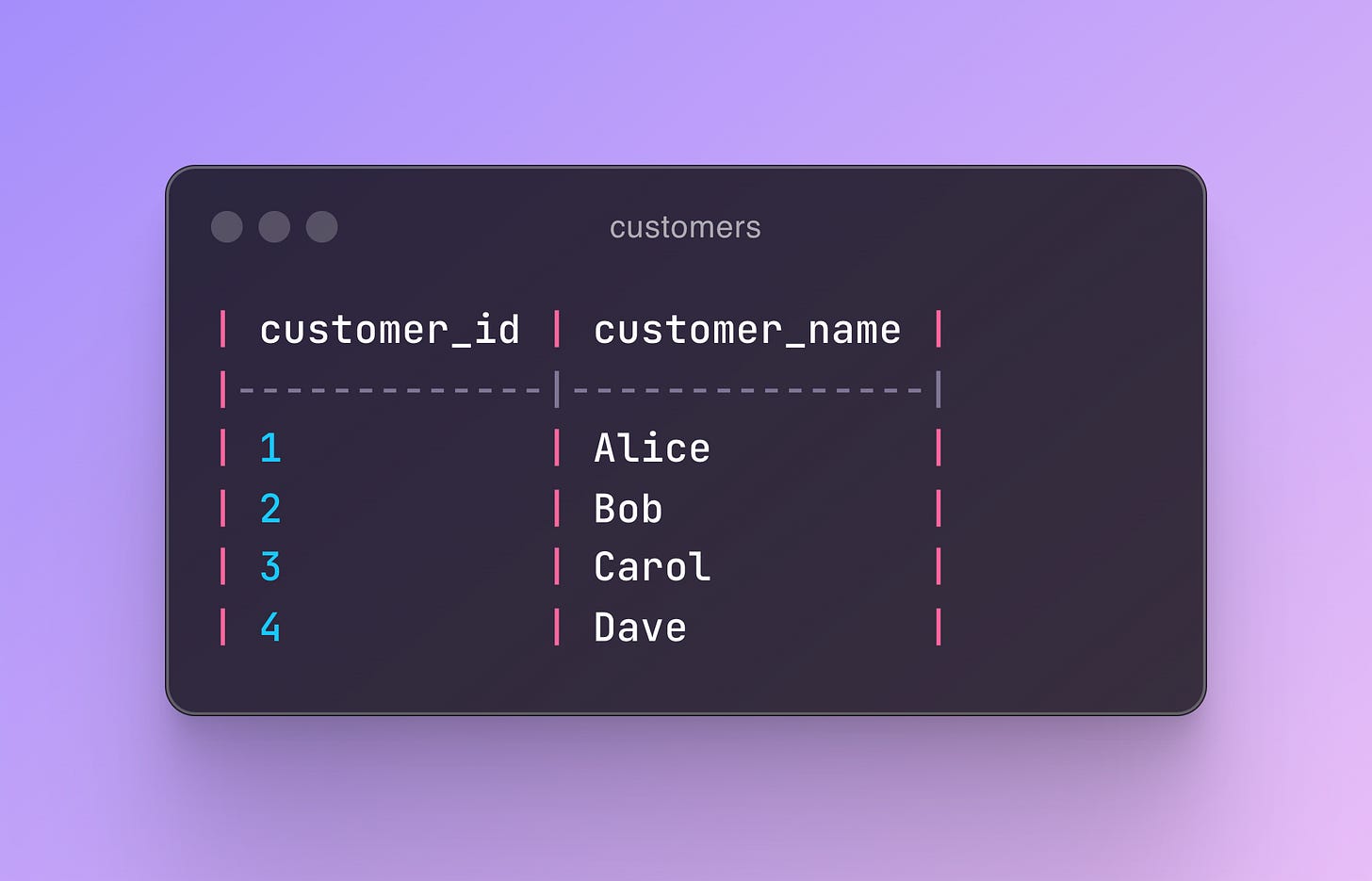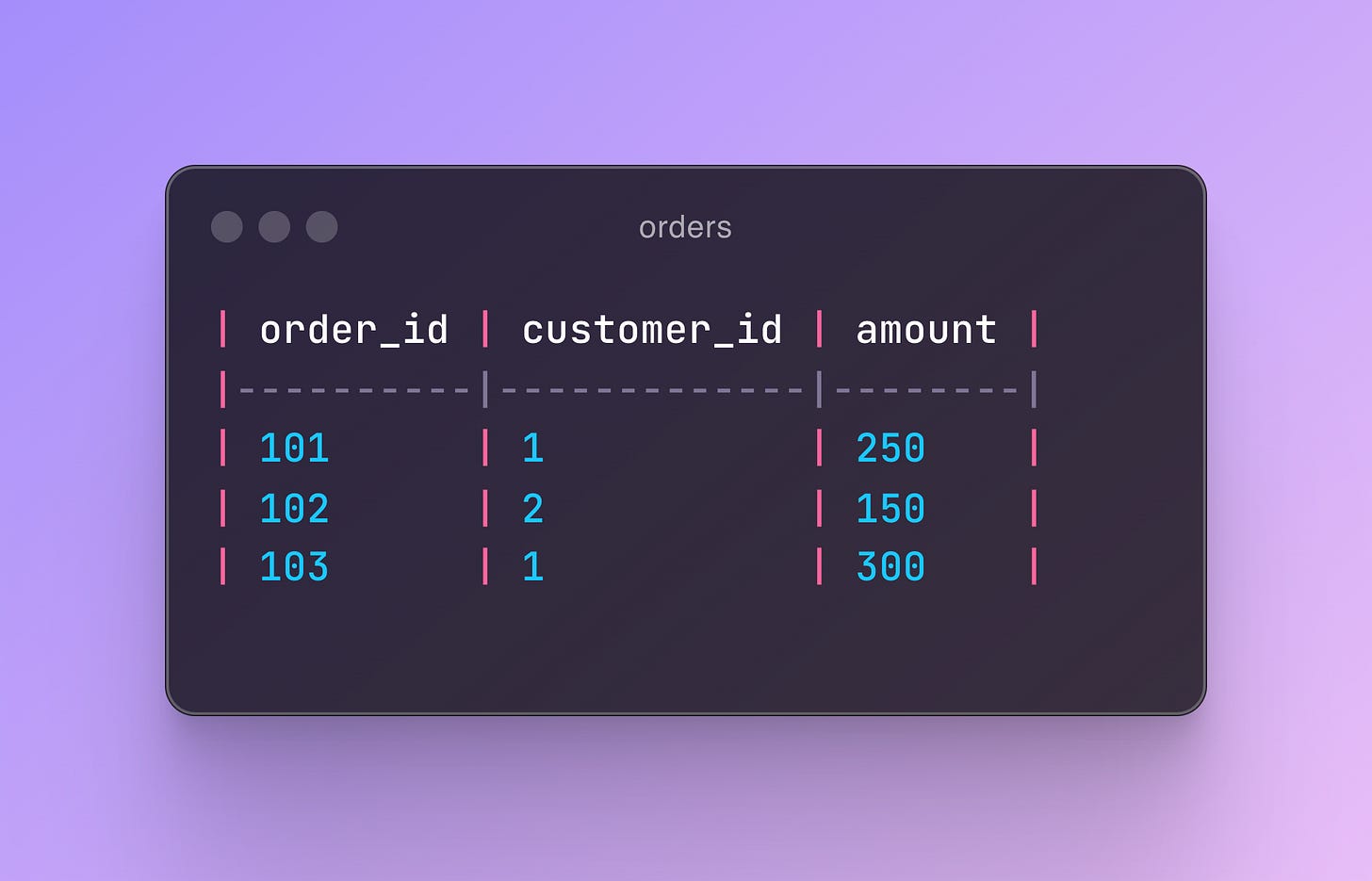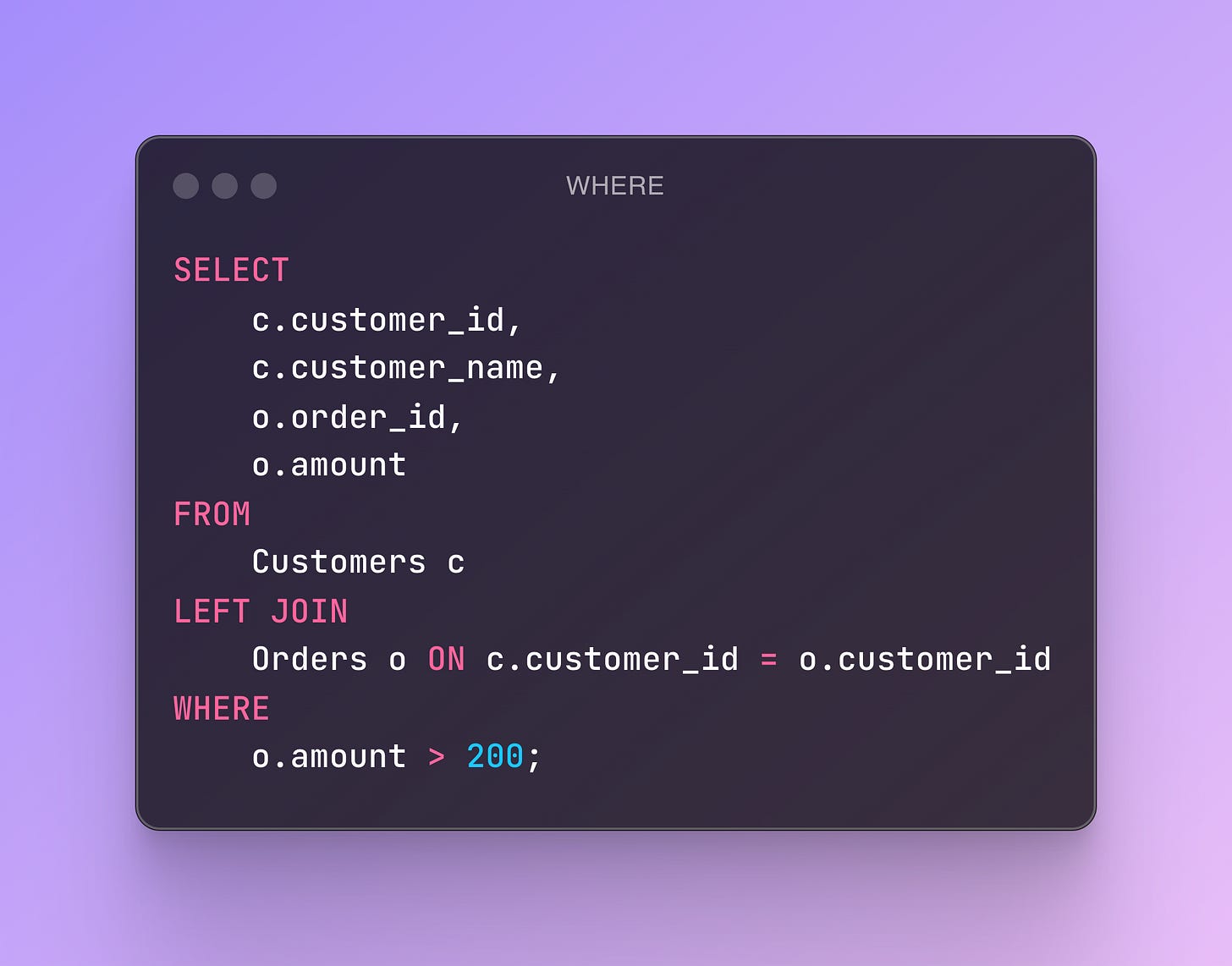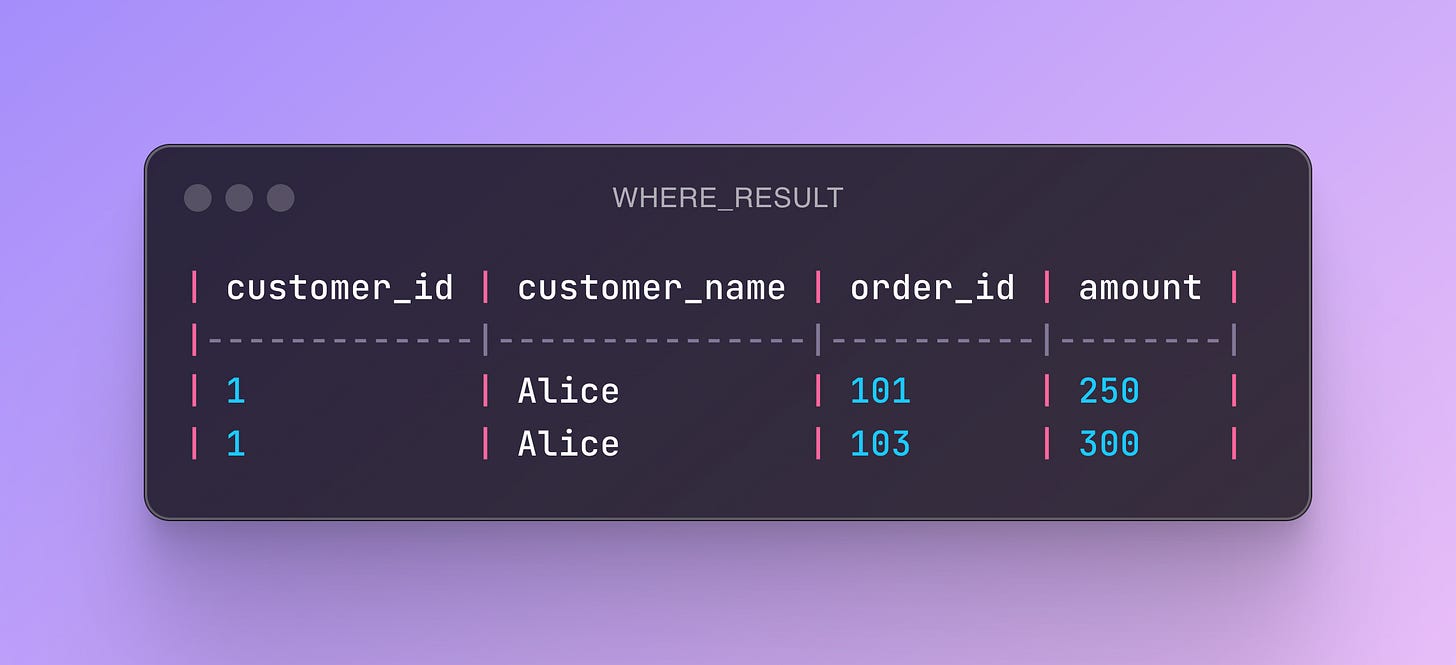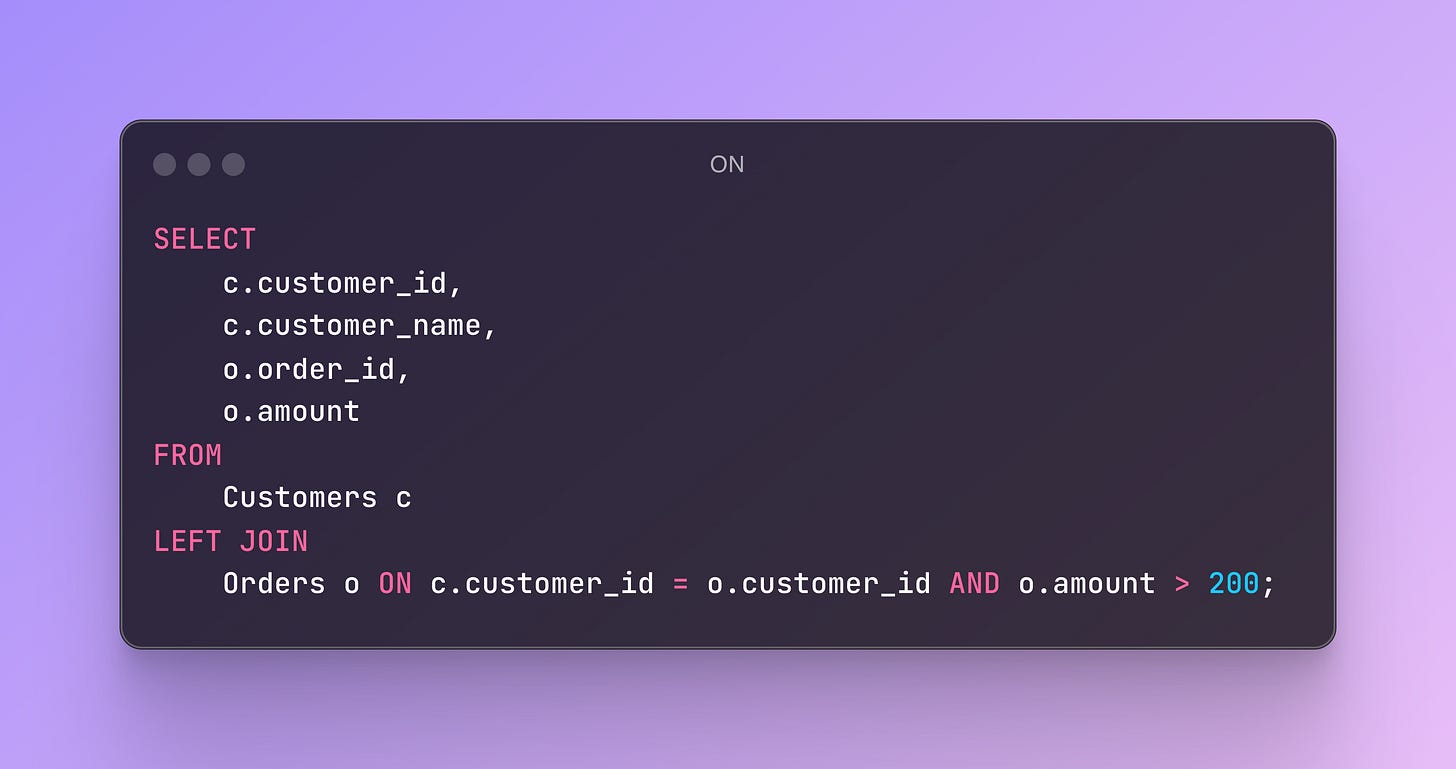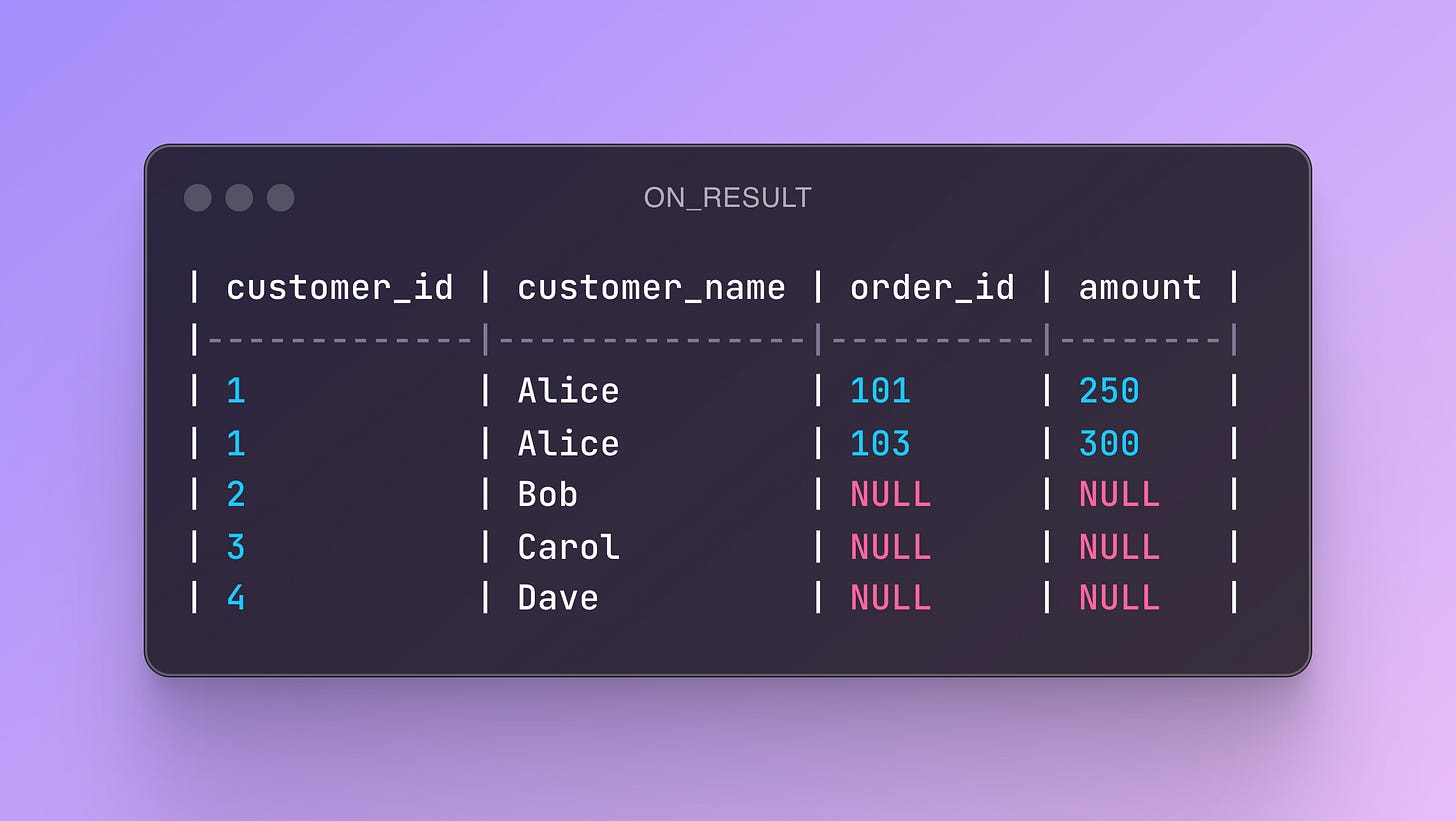Filters in the JOIN Clause vs. WHERE Clause: Does It Matter?
Let’s look at how the placement of filtering conditions in SQL queries, especially with LEFT JOIN, can impact the inclusion or exclusion of unmatched rows.
Scenario:
Suppose we have two tables:
Customers: Contains customer information.
Orders: Contains order details for customers.
Customers Table:
Orders Table:
Now, to retrieve customers along with their order details. Let’s look at -
1. Filtering in the WHERE Clause:
Result:
The
LEFT JOINincludes all customers.The
WHEREclause filters out rows whereo.amountis not greater than 200.As a result, customers without orders and those with orders of 200 or less are excluded.
2: Filtering in the ON Clause
Result:
The
LEFT JOINincludes all customers.The filtering condition
o.amount > 200is applied during the join.Customers without matching orders or with orders of 200 or less have
NULLin order columns but are still included in the result.
Key Takeaway:
Filtering in the
WHEREClause: Applies after the join operation, potentially excluding rows from the final result.Filtering in the
ONClause: Applies during the join operation, affecting which rows are matched but not excluding rows from the left table.
Understanding where to place your filtering conditions is crucial, especially with LEFT JOIN, to ensure your query returns the desired results. So, don't Let Your LEFT JOINs Leave You Out.


